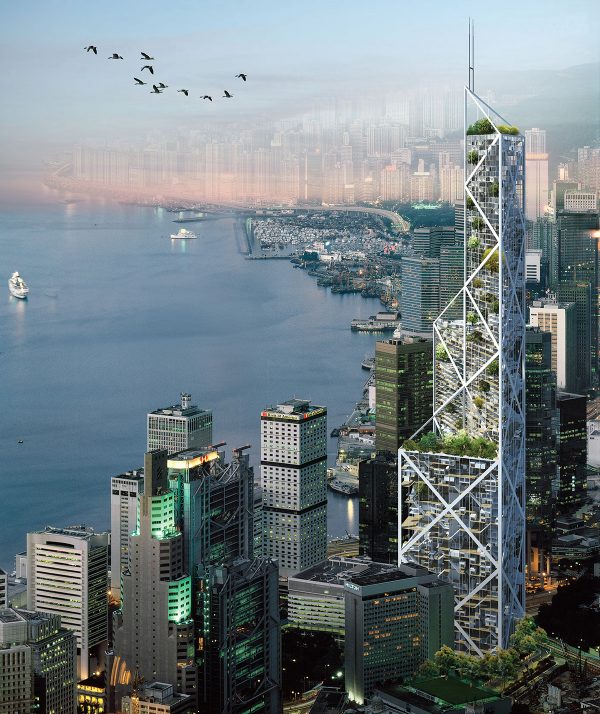Honorable Mention
2018 Skyscraper Competition
Ngai Hang WU, Han-Hsun, Hsieh, Man Nguyen
United Kingdom
A POST-WORK, POST-CAPITALISM WORLD
Hong Kong, in the near future, where automation has taken control to the full extend. A place where A.I and Robot have replaced 90% of the works. A universal basic income system has been delivered for all unemployed citizens. Human kind progress to a new kind of society: a post-work, post-capitalism world. As most of the white-collar jobs are fully automated, office towers will become useless and empty. However, the need for housing is never reduced. Indeed, since most people have no works, they will spend more time at home and enjoy their freedom. In exchange, people’s hobbies will turn to become their main activities. Thus, this lead to a mass reduction in office spaces, but an increment in housing space. Therefore, a logical policy from the autonomous governments will be executed to re-occupy, renovate and re-alter office towers to become a new type of housing for people, a truly bottom-up approach which create dynamic and democratic community across the ex-economical area of Hong Kong.
AN AUTONOMOUS SYSTEM
In 2050, banking has turned to be fully online and autonomous. Bank Organization has started their campaign to give back the empty office space to the state. The state has deployed a strategy to re-distribute housing people from an overcrowded area, such as Kowloon into the center of ex-economical area, which now is becoming vacant. The Bank of China Tower, which was once described as a symbol of the capitalist forces, are now depicted to be one of the first structure to imply this democratic bottom-up housing strategy.
The process begins by analysing the basic needs of every citizens’ dream houses, then continued by observing the common activities that could be included into their new utopian neighbourhood. This information then will be gathered through an app called the “Dream House”, an interactive feedback platform which provides big data for further analysis. In the meantime, a centre of A.I design system will be using a computational power, which have been developed by architects and computer engineers, starting by generating a simulation system to aggregation and finally optimizing an eco-neighbourhood which balance the needs of each users, whilst providing an adequate quality of energy, light, ventilation and greenery for the more sustainable community and well-being inhabitants. Finally, the robotic manufacture, assembly and construction was deployed to renovate the existing structure and aggregating the new functions.
AN ADAPTIVE AGGREGATION STRUCTURE
The aggregation of the tower will never be completed. It will constantly be adapting, re-arranged and extended, according to the ever-changing need of the inhabitants. The messy micromanaged arrangements which organically and spontaneously functioned in the pre-industrial societies could be recreated using computational algorithms in this self-organizing neighborhood. This citizen-lead principle has been proven that could produce stimulate individual and social well-being. And Cellular Automata, as a model for complexity system derived from a simple interaction between the individual cell and its neighbor, are applied as the reference for the aggregation and re-configuration of the tower.
Under the frame of the scale of 3 x 3 meter, the combination of the constructing units can be separated into two parts, the public space and housing complex space, which each part can also be categorized into several combinations. According to the Cellular Automata rules, the implantation of first several blocks were created as the “cube”, which represent a living space requirement. The residents can build their own house based on what their interests and desire.
By harvesting the power of automation and A.I in architecture design, the future of human in post-work era is could be directed and progress to utopian eco-neighbourhoods across the ex-capitalism structure not only in Hongkong, but all around the world.

















